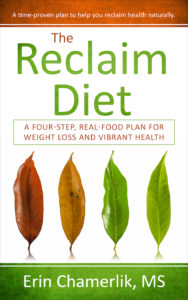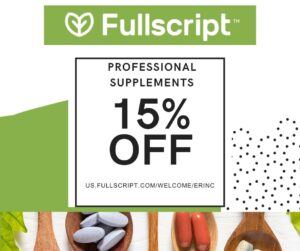
Is Almond Flour Safe to Consume?
Let me start by saying the best way to eat nuts is to buy them raw, soak them, and then dehydrate or roast them yourself so that you control the temperature.
- By keeping the nuts whole and intact, the fats are protected from oxidation. Oxidized fats will be found in roasted almond butter and almond flour or almond meal. Oxidation contributes to inflammation, leading to a decline in health.
- Soaking reduces the antinutrients that are present in nuts, making them more digestible.
- Nuts make a great snack and hold a lot of nutrition, so it may be worth keeping them in your diet.
Problems with Almonds: Omega-6 and Oxalates
Even with all the careful preparation to make almonds more digestible, the issue of Omega-6 fats is one reason we want to moderate the amount of nuts we consume.
Chris Kresser’s article, How Too much Omega-6 and Not Enough Omega-3 Is Making Us Sick, shows that it is the ratio of Omega-6 to Omega-3 in our diet that is more important that a specific amount.
Today we are consuming as much as 25:1 Omega-6:Omega-3 instead of the lower 1:1 ratio of our ancestors. Test your Omega-6:Omega-3 ratio at home with this kit.
The foods that contribute the highest amount of Omega-6 fats to our diet are refined vegetable oils.
The first change I recommend is to make sure that the inflammatory vegetable oils are out of your diet. If you eat out frequently, buy bottled salad dressing and other processed food, then you are likely consuming more omega-6 oils than you realize.
Avoid the pretty yellow vegetable oils found on grocery store shelves. Instead opt of extra virgin olive oil, raw coconut oil, and organic grass-fed butter.
Oxalates in Almonds and Almond Flour
Oxalates are compounds found in certain foods that combine with calcium and create a lot of irritation in the kidney, joints, and other tissues. People may feel pain, like arthritis or hip pain or back pain, and develop kidney stones due to high oxalates. Chronic vulvar pain (vulvodynia, vulvar vestibulitis, lichen sclerosus) is often related to high oxalates.
Oxalates are fairly high in nuts, especially almonds, cashews, pinenuts and peanuts. Just one ounce of almonds has 115 mg oxalate, and it is thought best to keep oxalates below 150 mg.
I like to use grain-free flour to make an occasional treat. For people new to the Real Food, Paleo or Primal eating plan I think they are a nice transitional food option as we move away from grains.
I also see that for some people grain-free flour foods can replace the foundational real food that needs to comprise our healthy diet: 6+ servings of vegetables per day, clean protein, plenty of healthy fats, and raw fruit, seeds and nuts.
If you find yourself eating almond flour pancakes for breakfast, almond flour muffins, scones and cookies for snacks, almond flour bread for lunch, and almond flour goodies for an after dinner dessert … then it is likely to be problematic for you.
Almond flour will be high in oxalates so any habit of eating almonds, almond butter and almond flour treats will create an unhealthy situation of high oxalates in your body.
Oxalates per ounce of nuts
- Almonds 150mg
- Brazil Nuts 137mg
- Hazelnuts 63mg
- Pinenuts 56mg
- Peanuts 52mg
- Cashews 49mg
- Walnuts 10mg
- Pecans 10mg
- Macadamia 12mg
- Pistachios 14mg
Coconut flour is a better alternative flour to use occasionally.
Ask yourself these questions:
- Am I eating enough Real Food (fresh vegetables, healthy fats from butter/coconut oil/olive oil, clean animal protein) or are these treats becoming a bigger part of my diet?
- Do I routinely consume wild caught fatty fish like salmon and sardines, grass-fed beef and free range eggs to increase my omega-3 fatty acids?
- Do I take 1 Tbs daily of Carlson Cod Liver Oil or ProOmega 2000 gel capsules?
Focus on increasing the Omega-3 foods in your diet as you also focus on decreasing the Omega-6 foods. Start by getting the refined vegetable oils, grains and legumes out or greatly reduce them. Then think about how often you use the nuts, like almonds, that are high in oxalates – including almond flour and almond butter.
Watch the quantity of nuts you consume and use nut flour in moderation.
If you have digestive issues that you are working on, this may not be the time to eat any nuts or nut flour. Be faithful to supplementing with quality omega-3 cod liver oil or gel capsules and eating fatty fish.
Remember, when we have higher levels of omega-3 we have a reduced risk for cardiovascular disease, Alzheimer’s disease, dementia and diabetes.
If you are concerned about your ratio of omega-6 to omega:3 because you want to reduce inflammation and avoid the diseases of modern civilization, you can always get your omega levels tests. A quality at-home test is available from OmegaQuant.
Want more information on a Real Food way of eating? Get a copy of my book, The Reclaim Diet.
Recommended
-
Dandelion for Liver Support and Health BenefitsJuly 20th, 2024
-
Modified Citrus PectinJuly 11th, 2024
-
Bentonite Clay Mask for Face and ArmpitsJuly 8th, 2024
-
Two Supplements for Erectile DysfunctionJune 30th, 2024








